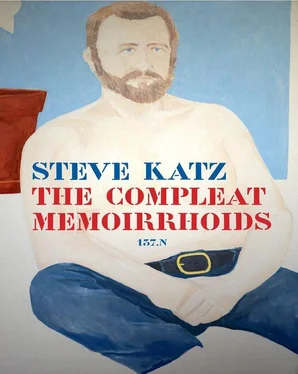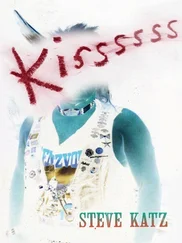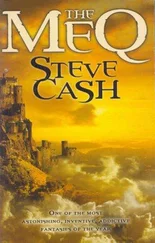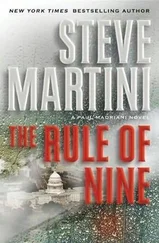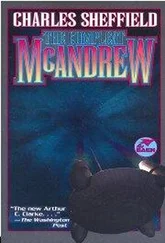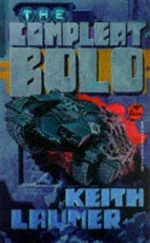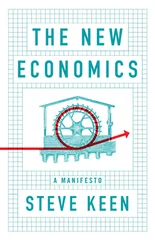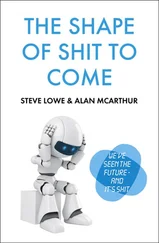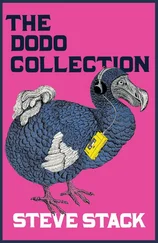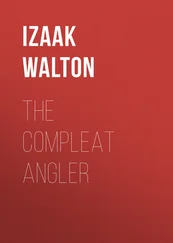On one water trip Ozark stopped in his tracks, the tan hackles rose on the back of his neck, he growled, yelped, and took off into the woods, only to soon come yelping back out, chased by a large, sage-coated, fat, healthy coyote. When it saw me it stopped, turned, and loped back into the woods. The next time Ozark scared something up, it was the doe, a ferocious mother of twin fauns. I had seen her browsing with her twin fauns on another day. It was chasing Ozark, but as soon it saw me it changed its mind and came after the human. Luckily I was near a young ponderosa pine. I dropped the water packs and shinnied up. It could barely hold my weight. Not far below me the doe circled the tree, snorted warnings to its fauns, and kicked at the duff. There was thunder in the distance. I had to get back to the tower. I called for Ozark, but the dog was long gone home. Probably no more than fifteen minutes passed, but it felt like hours of hugging this young tree before the doe returned to its bedded fauns. This my most dangerous encounter in the wild, and I know no one else who was ever treed by a deer.
After a month Jingle and I had little left to say to each other. We still loved each other, but saw little reason to talk, unless we needed a discussion about how to skin a porcupine. After a precarious process we discovered that most of the meat is on the legs, so you needn’t skin them. The one I shot had been eating pine seedlings so its flesh was not palatable, tasted of pitch. In the valley, where they eat corn, the flesh is sweeter. Nonetheless, because the porcupine is slow moving, it’s considered important survival food for someone lost in the woods. We’d also discuss how to cook a fool hen when I brought one back. The fool hen is a kind of grouse that camouflages itself by freezing in place when startled in the underbrush. It won’t fly. You can hit it on the head and take it home. It’s like Al Capp’s shmoo. There aren’t many left.
Every three weeks John packed in our supplies. By the second month we anticipated the pleasure of his arrival with fresh food, and the relief of someone different to talk to. He landed a little after noon on horseback, with three pack mules. We hovered around him as he untied the packs, and we hustled the supplies up the stairs of the tower. “Sometimes I ride Hilda on the Black Mountain trail, because that trail can be rough if it’s rained, and Hilda’s a sure-footed jenny,” he once said in a talkative mood. He refused lunch, tea. “Got to get back before five, help Celia with dinner.” He tied the empty packs back up and pulled out a twist of jerky to chew on his way back down. John was clean-shaven, but that look seemed recent. Celia was his wife, recently married, a school-teacher, and she probably had a say in the way he looked. I wondered what their conversations were like. I would have liked to tell him about my encounter with the doe. When we finally packed out, after our contract was over, we spewed conversation compulsively in every direction, at every gathering for the next month. I never talked, however, about the man who’d been treed by a mule deer.
Living in an apartment at 33 Crosby Street sometimes felt like a residence on the subway. It wasn’t crowded, I lived alone, no straps to hang onto, the building shook only slightly; nonetheless, the empty semis clattering through on Grand Street made me feel constantly in motion. I had to wear earplugs at night to slow down. The apartment was on the second floor, on this dark street gouged into Manhattan, banked mostly by loft buildings for about ten blocks, dead ending at Bleecker Street, at the glory of the only Louis Sullivan façade in New York, and at the other end running up against Howard Street, near a Chinese chicken market, where anyone can pick out a live chicken, and get it slaughtered and dressed on the spot. The apartment was in one of three buildings built as tenements, no shower, the bath in the kitchen sink. The landlords were three decent Italian brothers. They maintained the buildings themselves, and kept the rents low. My rent was seventy-six bucks a month when I left it in 1978. I’d inherited the apartment from Joe Kurhajec, a sculptor, and his wife at the time, Primarosa Cesarini-Sforza, now a brilliant artist in Rome. Joe was deaf, so the racket of the semis never bothered him. Most of the other tenants were Italian families. The buildings have been sold now, and below my old apartment they’ve opened a tapas bar and club. The place now must be tolerable only to the deaf. William Wegman lived in a loft across the street, and more than once when I stepped out to go for a chicken, or some Chinese soup, I slipped on the Weimaraner shit.
Most mornings I carried my wooden sword up the six flights to the black tar roof where I practiced the tai-chi sword form. I liked to do it in the morning, when it was quiet, when no one else was around. One sunny afternoon I was feeling vaguely rattled, so I decided to go up and calm myself doing some forms. That was a mistake. All the mothers from the building were stretched out on lounge chairs to tan themselves on the tar beach. All at once like a grazing herd of startled pronghorns they turned to look at me, eyes wide from behind their mascara, their bouffants wobbling. I panicked and for a moment turned to go back downstairs, but then decided just to get out of sight and do the form anyway. To them I must have looked like some bearded hippy maniac waving a stick around. Before I got through three moves of the form I was surrounded. They had called their sons to the rescue. These were guys from the neighborhood, most of whom were nodding acquaintances. They were absolute models for Goodfellas ground troops, out of Scorsese’s central casting. The neighborhood was safe because of these mooks; no petty crime on their mean streets. Fortunately they recognized me as an inhabitant, and calmed their mothers’ fears.
The six or seven of them could easily have tossed me off the roof to feed the rats in the lower courtyard. Even had that happened, I wouldn’t have worried. With sword in hand at that time I was an ongoing Hong Kong movie. I could fly. I could have lifted off the roof and sailed airborne across the Hudson River. I could have lofted over the hills of Pennsylvania, over the Ohio Valley, across Indiana, over lake Michigan, past Chicago with its throne of suburbs, its dense crown of skyscrapers. I could have sailed over the great plains of America and come soon enough to the Eastern slope of the Rocky Mountains, where I would have come down slowly in Boulder, Colorado, just in time to teach the workshops. Creative Writing was my game.
Henry Crow-dog, full-blooded Sioux, seventy-four years, stands straight up, face regal and craggy, noble hooked nose, his hair long and black. He is shaman of the Native American Church, an “institution” built on a jute sack full of peyote buttons. He lives on the Rosebud Reservation, in South Dakota. He calls his place Crow-Dog’s Paradise. In the portrait on the sign above the entrance to the paradise Henry hovers over the ground seated in the lotus position, arms extended right and left. In the right hand he holds a peyote button. In the left he holds a cross. Real Crow-Dog refuses a cigarette offered by Leo Garen. “Tobacco is a sacrament,” he explains. “We smoke in ceremony, not as habit.” Leo is negotiating a wage for Henry to be spiritual adviser on our shoot at the Cheyenne River Reservation. He also needs him for a couple of shots. We meet in his house, a sprawling shack near the Rosebud River. The structure is tacked together out of corrugated tin, salvaged windows, car doors, road signs, refrigerator pieces and other odd scraps. Henry refuses to live in one of the prefabs the BIA erects on the reservation. Leonard, his son, lives in one of those with his family. Two young Navajo braves visiting Henry greet us with “How!” as they are leaving. The greeting stuns me. I’ve heard it before only in movies. The sound drops like a stone through my consciousness. That one syllable resonates from the gut, from something real and ancient. It comes from the core of a whole people. This lens that starts to focus me into looking at Native Americans as they are rather than seeing them distorted through filters of white American mythmaking.
Читать дальше
